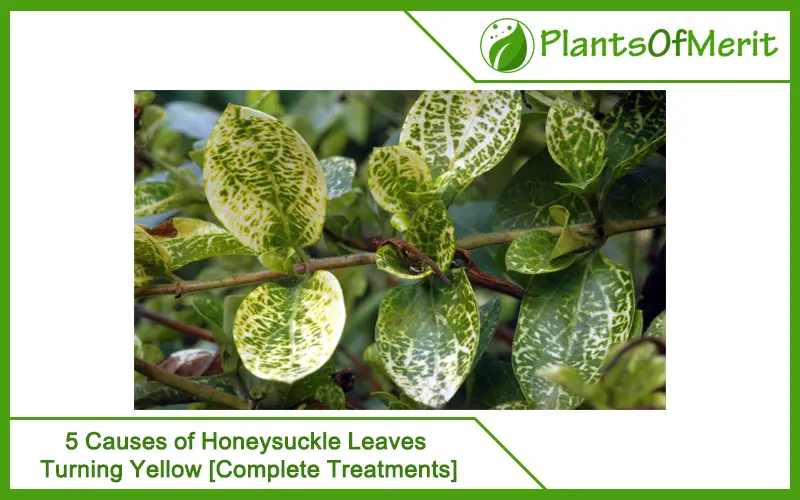Ornamental plants spruce up the look of your garden but they do come with a lot of maintenance. From taking care of the quality of the soil to keeping the pests away, there are a lot of factors involved in its care. You have to be mindful of the temperature, the kind of water, and even the level of humidity that the plant is getting.
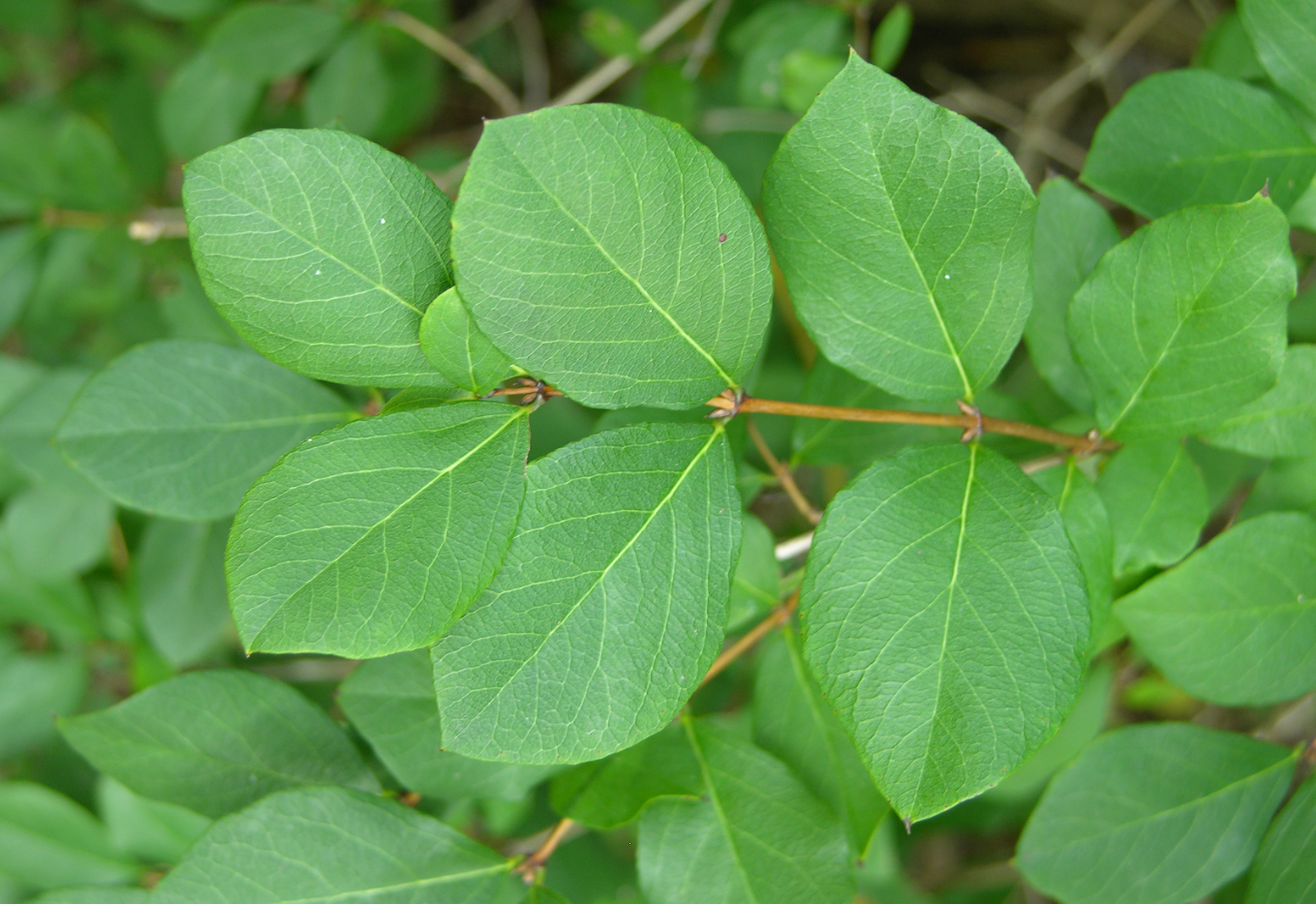
The good thing about honeysuckle is its resilience. It can sustain adverse environmental conditions and even pest infestation to an extent. However, even when you do all the things properly, experiencing the leaves turning yellow is common in the plant.
We will discuss why it happens and what you can do to combat the issue proactively.
Why are the Honeysuckle Leaves turning Yellow?
Honeysuckle leaves can turn from their stunning combination of green and red to yellow if it isn’t getting optimal nutrition, moisture, and temperature settings around.
We will discuss all the possible causes and highlight a few potent control measures as well.
1. Moisture imbalance
Honeysuckle has a very specific water balance requirement for optimal growth. Ideally, you need well-draining soil and also take care of the staple watering requirements to ensure that it grows optimally. However, lack or excess watering will lead to drainage or lack of nutrient uptake, leading to the yellowing of the leaves.
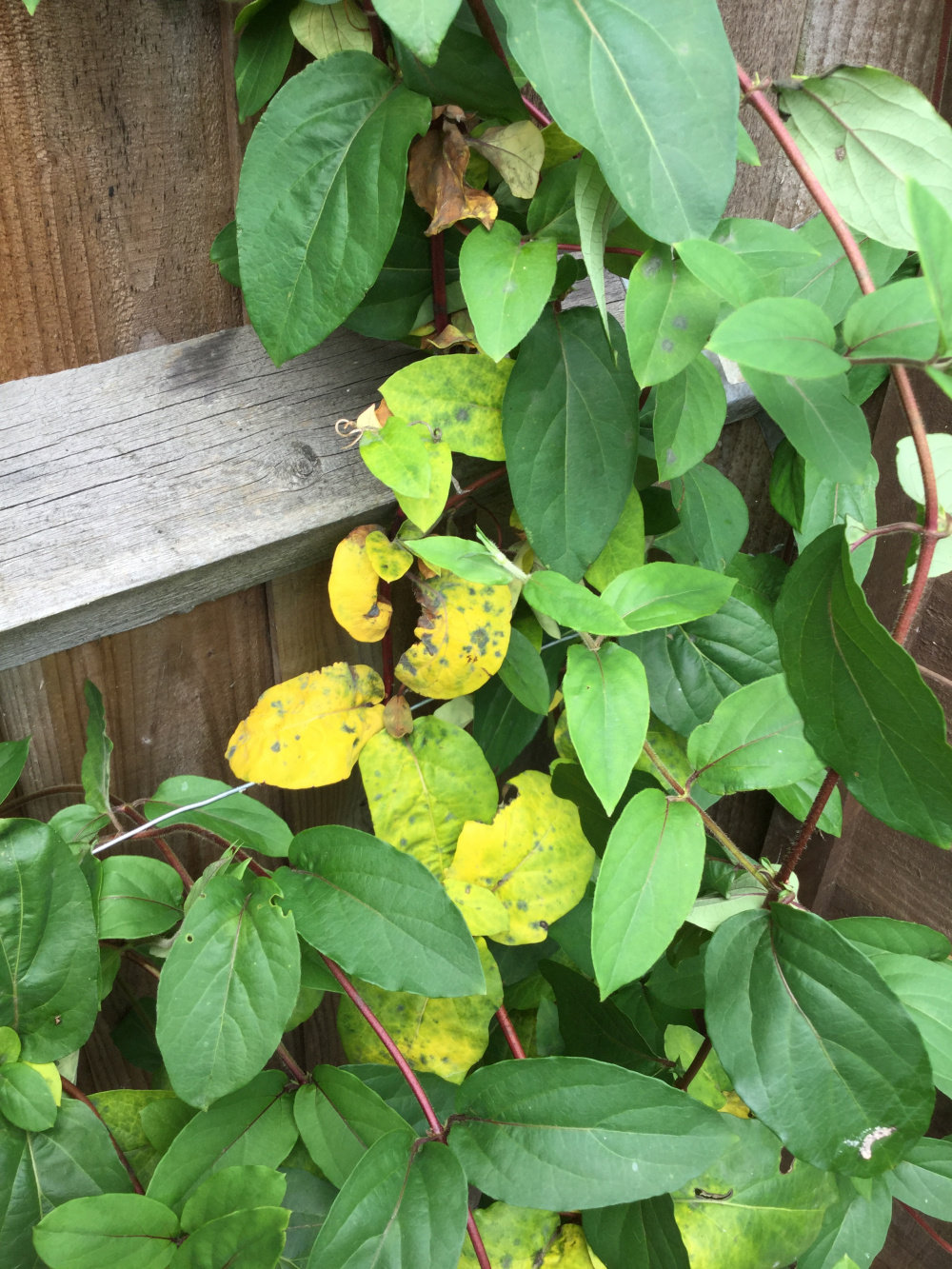
The budding honeysuckle plants need consistent watering, especially around 1 inch per week. After the first year of growth, your aim after that is to maintain the soil moisture from thereon. Watering is also dependent on the type of soil. You need access to well-draining soil for optimal growth and development in the long run.
How to fix it?
You can start by buying a good-quality and functional moisture meter. This will allow you to keep a check on the soil’s moisture level and water as required. Also, if the soil is moist to the touch, avoid watering. Wait for the soil to dry out before rewatering.
2. Pathogen Attack
Fungal and bacterial infestation is very common in Honeysuckle leaves. Fungal infections leave risks of canker and leaf spots, both of which can contribute to the leaves turning yellow. It is detrimental to the plant’s growth in the long run, so taking immediate action is ideal.
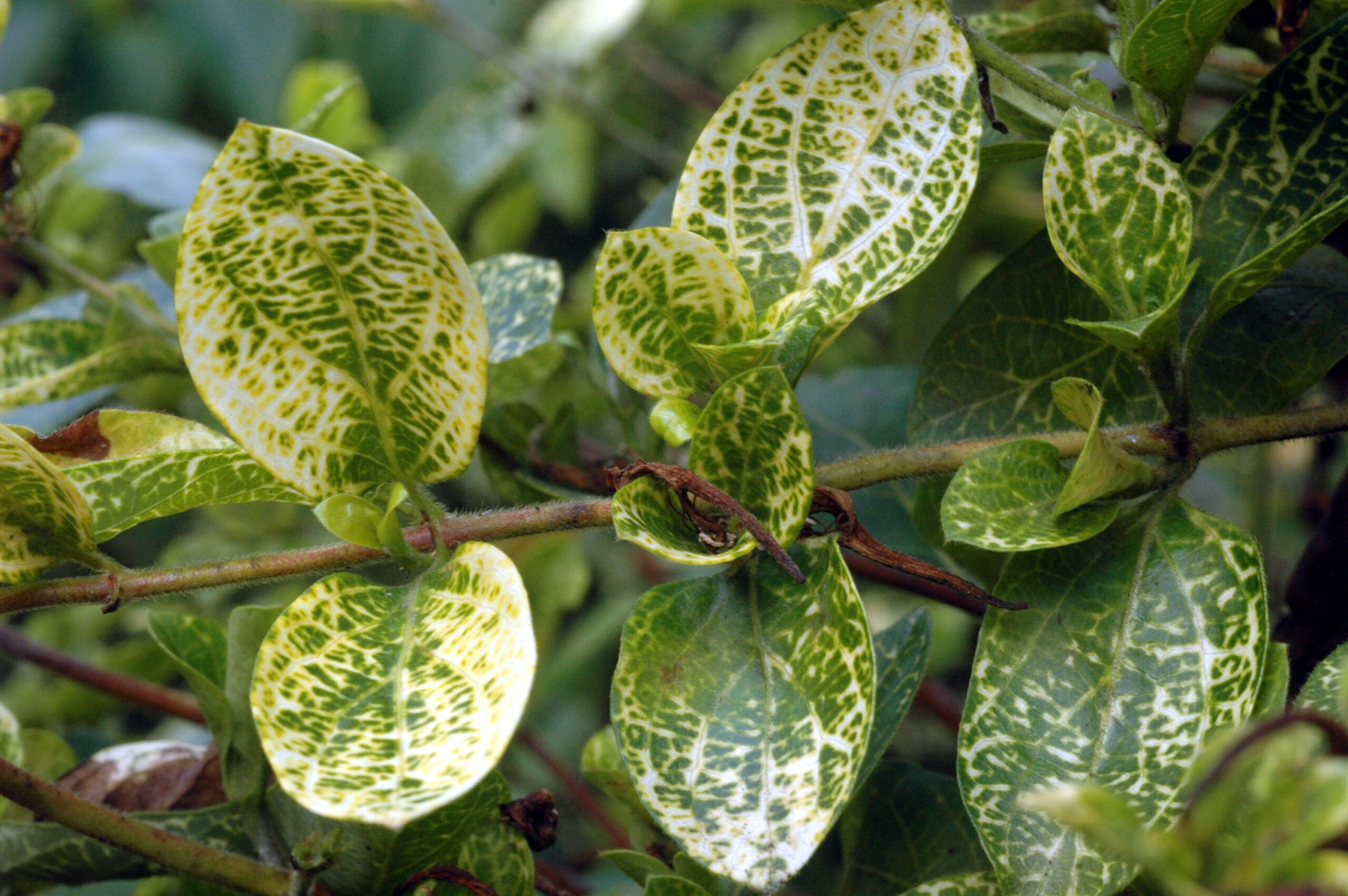
If you notice that the leaves are turning yellow with prominent red or brownish spots all over, it is an early sign of a fungal infestation that you have to take against immediately before it succumbs throughout the plant.
How to fix it?
Before you even consider a treatment plan or control measure, the first step is to identify what’s causing it. Is it a bacterial or fungal infestation? Based on your finding, you can then go ahead and administer the necessary treatment, including pruning, using a fungicide, etc.
3. Chlorosis
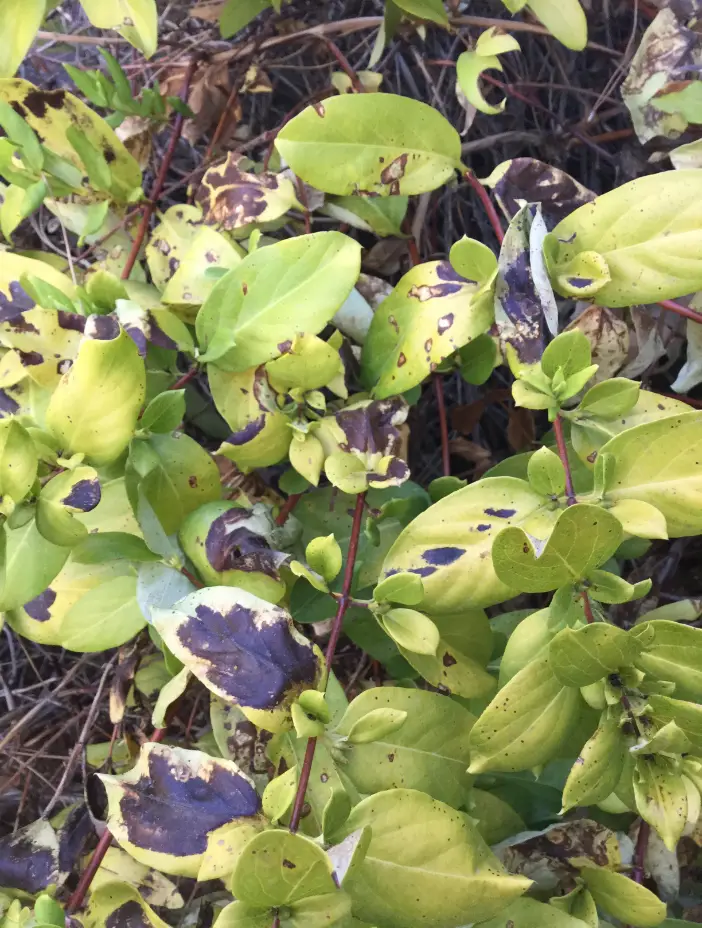
Chlorosis is the lack of green pigment in the leaves, otherwise known as chlorophyll. Typically, if you notice signs of chlorosis in the honeysuckle leaves, it is indicative of a potent nutrient deficiency that needs immediate attention. Sometimes, a lack of optimal levels of nitrogen in the soil leads to the yellowing of the leaves.
What you have to do is look out for the signs. Typically, we’d recommend looking into the potential risks of yellowing and also if you find the leaves wilting and falling off the branches. This indicates that there is a substantial reduction in the nitrogen levels in the soil.
How to fix it?
You might think that spraying excess fertilizers in the soil is the only remedy but you have to be careful with that as well. Honeysuckle is a vine, which means that excess fertilizer will do worse than good. So, look for fertilizers with a balanced proportion of nitrogen, potassium, and phosphorus in it. Also, check the soil pH since that contributes to risks of chlorosis in the honeysuckle plant as well.
4. Insect infestation
Pest infestation is another reason why your honeysuckle leaves are turning yellow and it’s a very serious issue that you have to be on the lookout for. Two of the most common insects that affect the growth of the plant are spider mites and aphids. They eat away at the leaves, creating holes in the process.
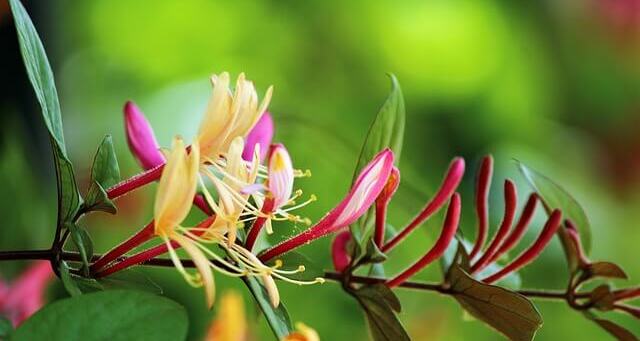
Also, aphids are very few minutes and are hard to locate on the dark green colored leaves of honeysuckle. So, spotting them at an early stage can be quite difficult. What you can do in such cases is look out for the underside of the leaf since that’s where they are.
As for the spider mites, look for a web in the leaves like you would with normal spider webs. If you notice the leaves turning yellow gradually, these insects are very likely the cause.
How to fix it?
The first step is to take your garden hose and wash away the plant with a high force of water. This will wash out the existing insects on the plant. If you don’t notice any difference even after that, we’d recommend spraying some commercially available insecticides.
5. Weather issues
The climate and environmental factors can stress out the honeysuckle leaves as well. The plant is popular in temperate regions, so if you live somewhere with continually changing seasons, you might have to take precautions.
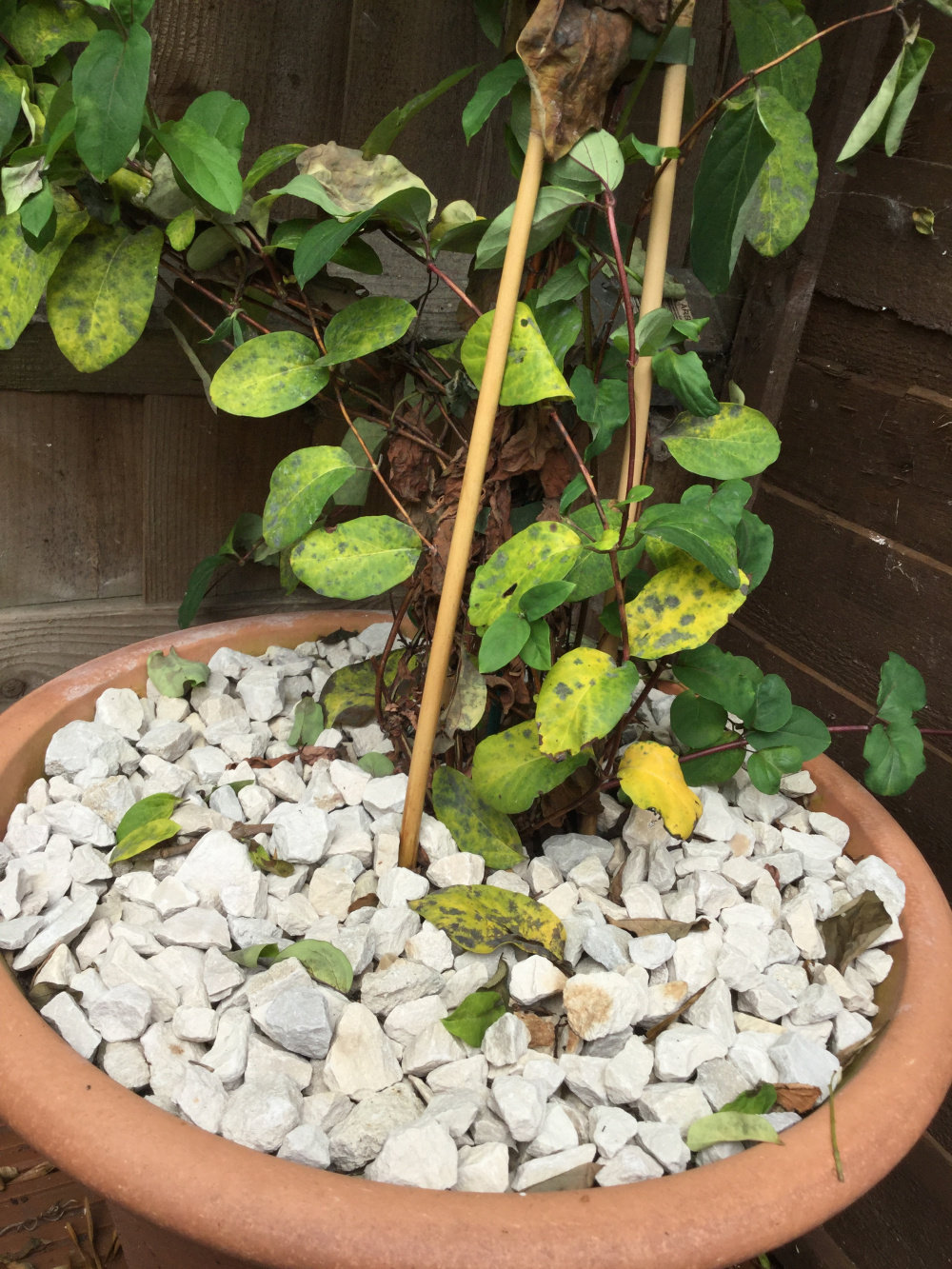
Also, be mindful of the soil’s pH level because that plays a crucial role in the plant’s growth. The optimal soil pH for honeysuckle is 6-8.
How to fix it?
Always consider growing a plant that will grow best in the kind of weather conditions you live in. Typically, environmental stress is one of the most common issues with the leaves turning yellow. So, be vigilant of the sunlight exposure, the humidity, and the soil’s pH as well.
Conclusion
Honeysuckle leaves turning yellow will entirely damage the plant’s appearance and its quality of growth. So, look out for the possible causes before you administer any of the control measures mentioned. Sometimes, the issue can be a mix of multiple triggers, which requires further extensive treatment options.

